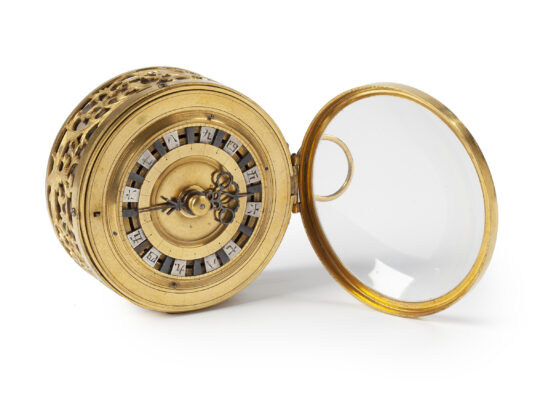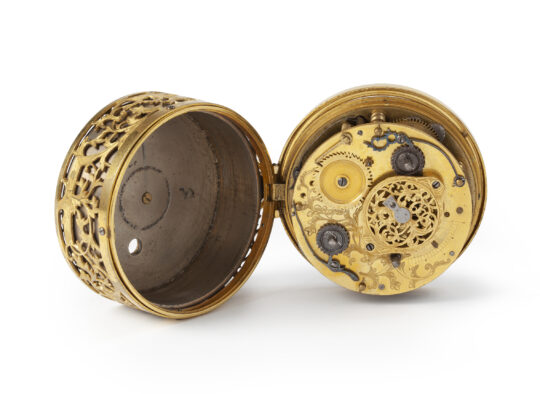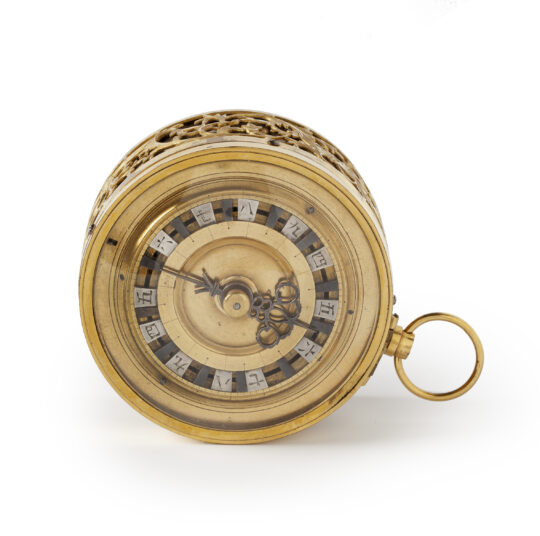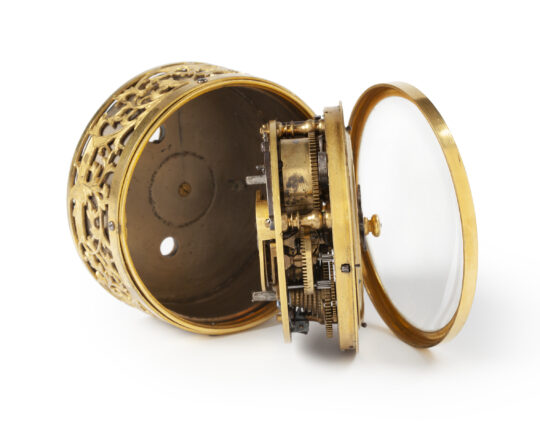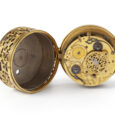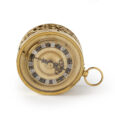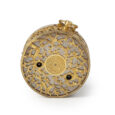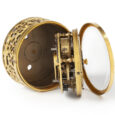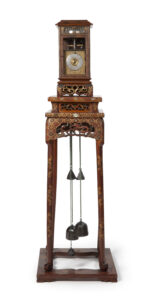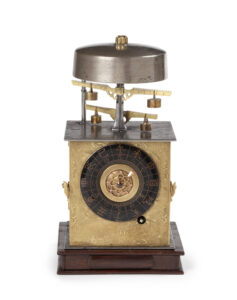PORTABLE WATCH ‘KEISAN-DOKEI’ Ca. 1850 Japan
M&R267
PORTABLE WATCH ‘KEISAN-DOKEI’
Circa 1850
Japan
Movement
The circular, spring-driven brass movement of this portable watch “keisan dokei’ consists of a going train, as well as an striking train. The going train has spring barrel with chain fusee, a verge escapement with balance and regulation. The backplate is elaborately engraved depicting leaf and vine motifs and has a pierced balance cock showing floral motifs. The striking train strikes the Japanese hours from 9 till 4 and the half hours alternately once or twice. The movement is wound from the bottom.
Dial
The brass dial has a revolving chapter ring. It is divided into twelve adjustable silver chapters for the hour indication and twelve blued steel chapters for the half hours. The silver chapters are engraved with a Japanese hour marker. The steel half hour chapters are unmarked. A Japanese hour equals two European hours, the hours running from nine to four. The pierced blued-steel hand is fixed whilst the chapter ring turns.
Case
The cylindrical firegilt brass case has a suspension eye at the top. The case is beautifully pierced and engraved in a floral motif. In the rare side are two winding
Duration: 1 day
Height: 10.5 cm.
Diameter: 7.5 cm.
Literature
– R. Yamaguchi, The Clocks of Japan, p. 3.
– Tardy, French clocks, p. 615,
– N.H.N.Mody, Japanese clocks.
– Tijdschrift 0203 and 0204, Japanse tijdmeting
Japanese time measurement
Japanese time measurement is very different from its counterpart in the Western world. Instead of a fixed value for an hour the length of an hour in Japan, called toki is variable depending on the length of the day and night. Day and night are both divided into six toki, which cover the periods from sunrise to sunset and from sunset to sunrise. In summer the days are longer than the nights and consequently a day toki last longer than a night toki. In winter it is the other way around. This is the reason why Japanese clocks have sliding chapters to adjust the length of a toki. There are also clocks with a fixed chapter ring and a revolving hand. To regulate the lengths of the toki the weights on the foliot can be moved, which makes the clock go faster or slower. This is mainly found in older clocks. The hour numerals run from nine to four, the latter being midday. Number nine was holy in Japan. Each toki, twelve in total, also had its own sign of the zodiac, which were sometimes indicated on a ring around the chapter ring.

